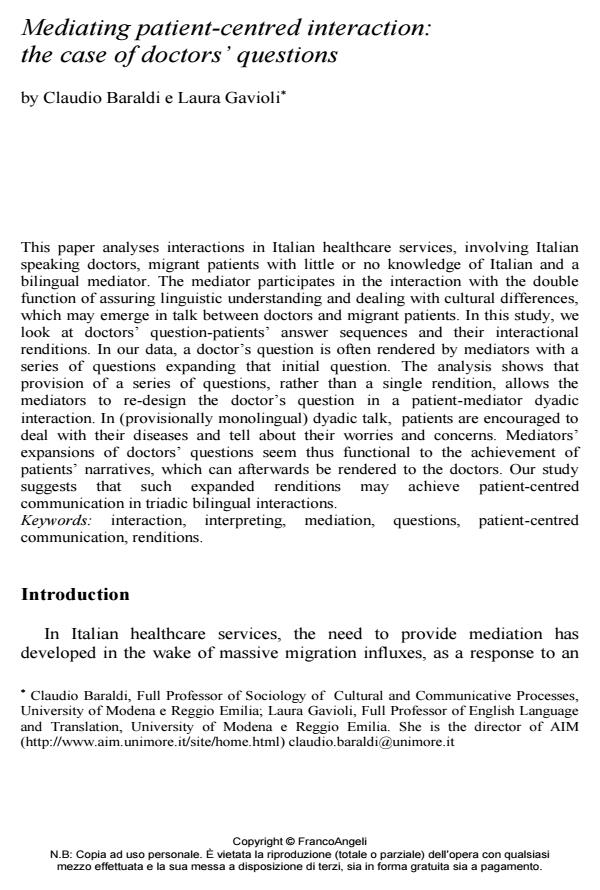Mediating patient-centred interaction: the case of doctors’ questions
Journal title SALUTE E SOCIETÀ
Author/s Claudio Baraldi, Laura Gavioli
Publishing Year 2013 Issue 2013/1EN
Language English Pages 17 P. 104-120 File size 516 KB
DOI 10.3280/SES2013-001008EN
DOI is like a bar code for intellectual property: to have more infomation
click here
Below, you can see the article first page
If you want to buy this article in PDF format, you can do it, following the instructions to buy download credits

FrancoAngeli is member of Publishers International Linking Association, Inc (PILA), a not-for-profit association which run the CrossRef service enabling links to and from online scholarly content.
This paper analyses interactions in Italian healthcare services, involving Italian speaking doctors, migrant patients with little or no knowledge of Italian and a bilingual mediator. The mediator participates in the interaction with the double function of assuring linguistic understanding and dealing with cultural differences, which may emerge in talk between doctors and migrant patients. In this study, we look at doctors’ question-patients’ answer sequences and their interactional renditions. In our data, a doctor’s question is often rendered by mediators with a series of questions expanding that initial question. The analysis shows that provision of a series of questions, rather than a single rendition, allows the mediators to re-design the doctor’s question in a patient-mediator dyadic interaction. In (provisionally monolingual) dyadic talk, patients are encouraged to deal with their diseases and tell about their worries and concerns. Mediators’ expansions of doctors’ questions seem thus functional to the achievement of patients’ narratives, which can afterwards be rendered to the doctors. Our study suggests that such expanded renditions may achieve patient-centred communication in triadic bilingual interactions.
Keywords: Interaction, interpreting, mediation, questions, patient-centred communication, renditions
Claudio Baraldi, Laura Gavioli, Mediating patient-centred interaction: the case of doctors’ questions in "SALUTE E SOCIETÀ" 1EN/2013, pp 104-120, DOI: 10.3280/SES2013-001008EN